This Amazon SEO Check guide isn’t how to rank high on Amazon (no idea how to achieve high rankings for a product listed within Amazon), this is literally SEO checking Amazon.com for SEO mistakes that will impact their Google rankings.
The reason for writing this SEO check guide is to attempt to show why looking at your competitors SEO methods (like looking at amazon.com) and copying their SEO techniques is NOT a particularly good way to improve your business websites Google search engine rankings.
Never assume because a big brand ranks high in Google it’s because their webmaster understand SEO, just like MONEY is a major factor in brand marketing, it can be a major factor in a brands SEO.
Amazon Website SEO Check
When checking the SEO of a website like amazon.com you aren’t checking ALL SEO factors, you can’t check them all. What tends to happen is we analyze parts of on-page SEO in detail and barely scratch a competitors off-page SEO.
Most webmasters won’t use tools like Google PageSpeed Insights Tool Results and Google’s Lighthouse Tools Results for example which can indicate some serious on-page SEO mistakes.
Amazon has poor Google PageSpeed Insights results due to poor onsite SEO, yet generates millions of of visitors from the Google organic search engine!
Imagine how much more traffic AND sales they could generate if they got more performance SEO factors right!
Why SEO Check Amazon?
I think everyone reading this will agree Amazon as an online business in terms of traffic is a huge success, Alexa currently (September 2014) lists https://www.alexa.com/topsites Amazon as the 9th most popular website in the world. Don’t take Alexa ratings too seriously, they are easily skewed, but they are a good guide to popularity: let’s go with Amazon is one of the top 30 websites worldwide (that’s a LOT of traffic).
You would think with a multi-billion dollar business (Amazon 2013 revenue: ~$75 billion) they would have some of the best web designers and SEO experts in the world working for/with them.
Surprisingly for a business that relies on it’s online presence their on-page SEO is complete SHIT, amateur SEO mistakes that my wife doesn’t make on her websites: my wife is about as tech savvy as a frog using an iPhone 6, she even describes herself as techless!
Amazon SEO Mistakes
I’m not going to go through every Amazon SEO mistake, just going to go through some of the Amazon homepage HTML code and show some SEO basics to indicate just how awful their SEO expertise is and how it will be costing Amazon money (lost revenue).
This should completely turn you off looking through your competitors HTML code and copying it just because they have better SERPs than you do. After showing enough SEO mistakes I’ll stop, do NOT assume this is all Amazon’s SEO mistakes, I could write an entire website on what they are doing wrong SEO wise and yet they out compete most competing websites.
You can perform SEO analysis on your competitors to check what they are doing right and wrong SEO wise, but don’t make the SEO mistake of copying a competitors on-site SEO verbatim just because they have better rankings, you might copy their SEO mistakes!
Google rankings are seriously skewed towards off-page SEO factors, without aged quality backlinks you won’t compete with anyone.
Off-Page SEO Beats On-Page SEO
This webpage you are reading now is targeting SERPs like SEO Check Guide and the on-page SEO will be awesome, but I don’t have the ability to achieve the same sort of off-page SEO (backlinks) the likes of Amazon can muster. If this article were on amazon.com it would beat all competition for the SERPs I’ve targeted because we’d have awesome on-page SEO AND awesome off-page SEO as well.
Without off-page SEO the on-page can’t do it’s stuff!
Off-page SEO is a long-term project, always building new backlinks, generating interest on social media networks like Twitter and Facebook… Off-page SEO is constantly shifting sands. With on-page SEO once you have your search engine optimized HTML code and SEO’d copy it’s pretty much done. Get the website design right and it has a positive SEO impact on every webpage, get the SEO copy right on an article and move on to another or build links.
Time wise it’s much easier to deal with on-page SEO than off-page, so makes a lot of sense as it’s so easy relatively speaking to get it right.
See my SEO Tutorials series to point you in the right direction and if you are a WordPress uses take a look at the SEO package I’ve developed. You still have to work on off-site SEO (backlinks), but getting on-page right means all your hard work building links isn’t wasted on your on-page SEO mistakes.
HTML SEO Check
Let’s take a look at amazon.com homepage HTML with a simple SEO tool we all have access to.
Load amazon.com in FireFox and “Right Click” on the page (not on an image) and click “View Page Source”.
Similar can be achieved with Google Chrome “Right Click” on the page (not on an image) and click “View Page Source”.
Doing this in FireFox loads the webpage you are viewing in HTML code view source, this is basically what the Google’s search engine spider (Googlebot) ‘sees’ when visiting Amazon.
The Amazon HTML output is huge so not going to give a screenshot of it all, it’s almost 3,800 lines of HTML code and the amazon web designers haven’t minified any HTML (Google SEO metric and very easy to achieve).
Here’s the first bit of the HTML code to SEO check.
If you see blank lines at the top of your HTML you might have some poorly written PHP code (assuming you use PHP). If it’s a PHP issue it’s whitespace at the end of some PHP code: easily fixed, close your PHP code or remove the whitespace.
Update: October 2018, the Amazon whitespace issue has been fixed. The code is still huge, 4,400 lines of code with a lot of unnecessary blank lines.
Some Web Developers are Useless!
All because fixing little mistakes like PHP whitespace is easy, it doesn’t mean it will get done.
My eldest son has a degree in computer software engineering and works for a UK insurance software company, they build the insurance quote systems that’s the backend of companies like Gocompare and insurance brokers. So my son is a computer programmer, understands PHP much better than I do, I wouldn’t know where to start trying to build something to provide insurance quotes!
When he got the job last year (2013- his first graduate job out of University) I took a look at their .co.uk website (their SEO is non-existent) and found a silly HTML error, the web developer had missed a speech mark “ (very easy mistake to make and very easy to fix).
I let my son know what the HTML error was etc… and he passed the information on over 6 months ago (he doesn’t have access to the website code). As you can see from the image above the error is still there (been way over 6 months since I found it).
This is a business of computer programmers, they can wipe the floor with me on programming skills, but they aren’t looking for this sort of HTML/SEO issue, they build software for insurance companies NOT websites to rank high in Google.
This is what’s probably happening with Amazon, they aren’t looking for HTML/SEO improvements like the ones I’m checking for. The Amazon website works, it pulls in millions of visitors, why fix something that’s not ‘broken’ will be the attitude!
Should I Minify HTML Code?
My website HTML code is fully minified, it’s on one line. Every line of code adds additional size to the file, so by not minifying Amazon’s visitors have to download larger HTML (and other) files. As you’ll see with other screenshots there’s a lot of blocks of blank lines in the HTML code.
According to Google PageSpeed Insights Tool Results for Amazon.com
Amazon’s desktop version of the site if minified the HTML would be 8% smaller, that’s 4.2KiB a visitor has to download they shouldn’t have to. That might not sound a lot (it isn’t a lot), but Amazon hasn’t minified HTML, CSS or Javascript and it totals about 6 Kib on the homepage.
It doesn’t sound a lot (and it isn’t), but it’s a Google SEO metric because it has an impact on the user experience.
Amazon has a huge amount of traffic, if they can reduce their HTML size by 4% not only will it save Amazon money on bandwidth (will be cheaper to run their site), but Amazon will run faster for it’s users and research has shown every second extra it takes for a webpage to load costs the business money: visitors are distracted easily and leave. Every millisecond counts, they could be loosing millions of dollars in revenue a year because they haven’t bothered minifying.
This is an SEO no-brainer, minifying doesn’t hurt the user experience, it makes files smaller meaning they load faster. All websites should minify as much HTML, CSS and Javascript as possible. Same is true for images, Amazon doesn’t optimize it’s images particularly well, the potential saving from image optimization dwarfs the minify issue above.
This is a tiny SEO issue for most websites, but then most sites aren’t generating billions of visits a year, 1% loss in revenue for a company with $75 billion plus revenue because some users leave because it’s not loading fast is HUGE.
SEO Title Tag Checks
Further down the HTML code (quite a bit down) we have the title tag, meta description tag and meta keywords tag HTML code.
We see several SEO mistakes here!
The meta keywords tag is completely ignored by Google, all these keywords are ignored:
<meta name="keywords" content="Amazon, Amazon.com, Books, Online Shopping, Book Store, Magazine, Subscription, Music, CDs, DVDs, Videos, Electronics, Video Games, Computers, Cell Phones, Toys, Games, Apparel, Accessories, Shoes, Jewelry, Watches, Office Products, Sports & Outdoors, Sporting Goods, Baby Products, Health, Personal Care, Beauty, Home, Garden, Bed & Bath, Furniture, Tools, Hardware, Vacuums, Outdoor Living, Automotive Parts, Pet Supplies, Broadband, DSL"/>This used to work in the 90s (though not with Google), websites would stuff their meta keywords tags with huge lists of keywords. Those who are ahead of the SEO curve don’t use the meta keywords tag at all, not worked in years.
The meta description tag has no SEO ranking value (has value). What that means is what is added here won’t result in a better ranking (won’t turn a Google ranking of 2nd place to 1st place), so the long list of keywords below is a waste of time. Amazon won’t get better SERPs for anything below because it’s in their description meta tag.
<meta name="description" content="Online shopping from the earth's biggest selection of books, magazines, music, DVDs, videos, electronics, computers, software, apparel & accessories, shoes, jewelry, tools & hardware, housewares, furniture, sporting goods, beauty & personal care, broadband & dsl, gourmet food & just about anything else."/>The value of the meta description tag is as an ad to persuade search engine users to click the Amazon result and not those of competitors above/below their listing in Google. When visitors see your webpage listed in a SERP they read the title tag followed by the description.
If you have used Google AdWords or any ad platform form like AdWords would you pay money to a marketing firm that writes ads if they provided the list of keywords above as ad copy?
The real question is if this were a paid ad do you think it would convert?
This is what Amazons Google search for Amazon looks like:
Update October 2018: This information has changed, Google no longer uses the DMOZ description, dmoz.org is no longer live. The Google search image has been updated.
Note the description “Online retailer of books, movies, music and games along with electronics, toys, apparel, sports, tools, groceries and general home and garden items. Region 1 …” doesn’t match the meta tag description.
Google is using the DMOZ description from http://www.dmoz.org/Shopping/Entertainment/.
Google sometimes uses the DMOZ description as the meta description tag (dumb idea of Google’s).
Even though Google no longer uses the DMOZ description the actual Amazon meta description still isn’t very good. Would you be happy to pay money for the above as ad copy that is meant to convert to clicks?
I don’t like either of them, they don’t make a user want to go to Amazon because of the description. My guess is since Amazon is a huge brand few people even read the home page Amazon description and would click the Amazon result if the description said “Click this if you are an idiot”. We Google Amazon rather than typing https://www. etc… in the browser.
The title tag isn’t much better and the title tag is VERY important SEO wise, this does have Google ranking value:
<title>Amazon.com: Online Shopping for Electronics, Apparel, Computers, Books, DVDs & more</title>Google only shows: “Amazon.com: Online Shopping for Electronics, Apparel …”
What we have here is the classic let’s try to fit everything in and the kitchen sink SEO approach.
Just to show how bad this over stuff SEO technique is let’s do some Google searches for what’s in the title without adding Amazon.
- Online = 45th
- Shopping = 18th
- Electronics = 7th (internal page)
- Apparel = not top 50
- Computers = 3rd (internal page)
- Books = 2nd (internal page)
- DVDs = 6th (internal page)
- more = 51st
- Online Shopping = 7th
- Online Shopping for Electronics = 18th
- Shopping for Electronics = 7th
Even when dealing with a huge brand like Amazon (PR8 home page when Google publicly reported PR, huge amount of off-site SEO) if a title tag is over stuffed it has a negative impact on SERPs.
The Amazon home page has the potential to be number 1 for almost any of the above SERPs (relatively easily for many of them), but not all of them at the same time.
Looking through the above SERPs would be a simple decision for me unless after looking at actual traffic numbers the home page generated serious traffic for phrases using all the above keywords.
All the SERPs with internal webpages ranking above the home page, remove them from the homepage title tag. There’s no SEO point targeting the home page at SERPs internal pages are ranking for, better to concentrate each webpage on a small set of hard SERPs.
A title tag like “Amazon.com: Online Shopping“
Online Shopping has over one million visitors a month alone.
Changing the title to the above with some supporting on-page SEO could see Amazon at number one for Online Shopping. They easily have the off-page SEO to take that SERP from 7th to 1st.
If Amazon wasn’t so brand heavy I’d go with “Online Shopping : Amazon.com“, if branding wasn’t an issue “Online Shopping“.
So if I (with this website) were targeting a webpage to online shopping my title would be “Online Shopping”, but I don’t have the off-site SEO to realistically compete: would make for an interesting LONG TERM SEO test mind you, add a highly optimized webpage for that one SERP and see where it ranks (might not even make top 30).
Update: I setup an Online Shopping SEO Test.
I’d have this entire approach site wide, better target each important webpage to difficult SERPs, Amazon clearly has the off-page SEO to compete for almost any SERPs.
Image Maps SEO
Most reading this won’t have heard of image maps. An image map is where you map links within an image via coordinates. Using this HTML technique you can use one image for multiple links, but Google ignores the links within image maps so they are anti-SEO.
The Amazon.com home page has around 15 image map links, the web designer has added alt text (alt text is important to normal linked images like the image below) to some of them, left others blank (that’s inconsistent SEO).
If you do use image maps for important links make sure there’s an alternative version of the links Google etc… can spider/index, otherwise part of your site might be hidden to Google: if there’s no links to a webpage, how does Google find it?
Amazon Footer Links SEO
The Amazon’s websites footer area consists of a LOT of external links to other websites they own.
They have over 30 external links and the footer links appear to be sitewide, that means each link exist on millions of webpages! Since Amazon is a heavily linked website, when Google used to show PageRank (PR) the Amazon home page was something like PR9 (that’s a LOT of backlinks).
This means the sitewide links from the Amazon footer in theory pass a LOT of PR/link benefit giving the websites linked to a huge Google ranking boost (backlinks are very important SEO wise)!
I own around 100 websites, should I copy the Amazon footer links and links to 30+ of my sites from this domain?
NO!
Google considers this an iffy area SEO wise. Those Amazon footer links are not a fair sample of how websites link together, Google might ignore the links because they skew Googles ranking algorithm unfairly. Google won’t ban Amazon for this, but they might discount/ignore the links and if that’s the case there’s 30+ external links passing no SEO value which could have been used on internal webpages.
This doesn’t mean don’t link sitewide to your own websites, just don’t link to dozens of them!
On this site I link sitewide to one website I own, that’s it. Highly unlikely Google will have an issue with one sitewide link.
Don’t Copy Amazon’s SEO Mistakes
There are many other SEO mistakes and failings on the Amazon site, but the above should convince you not to spend your time agonizing over your competitions HTML code looking for SEO tricks to push your website higher in rankings. As you can see even the huge brands (actually especially the huge brands) like Amazon do not have particularly great on-site SEO.
Just so happens with millions of backlinks and a lot of content, they can dominate the SERPs despite their lack of on-site SEO.
Get your on-page/on-site SEO right and you won’t have to work as hard to compete in whatever niche you are in. You can see from Amazon’s Online Shopping SERP (7th in Google) even with awesome off-site SEO, poor on-page SEO can let a site down.
Would love to work on a site like amazon.com, some of these big brands could increase their Google traffic easily by 10% without that much effort plus of course the increase in sales due to pagespeed improvements. Shame Amazon can’t afford me :-)
David Law

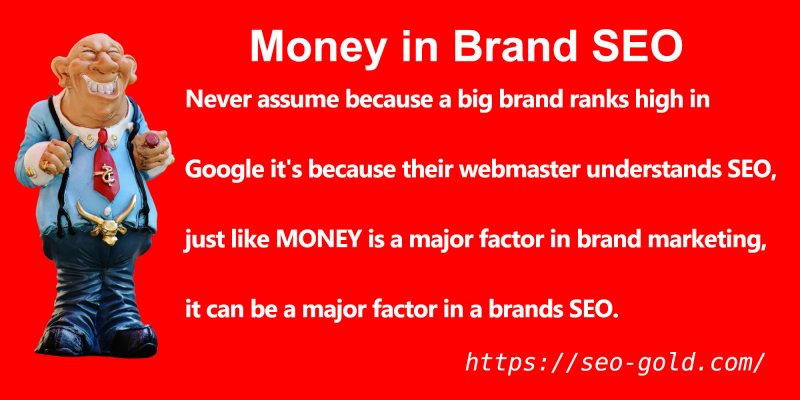
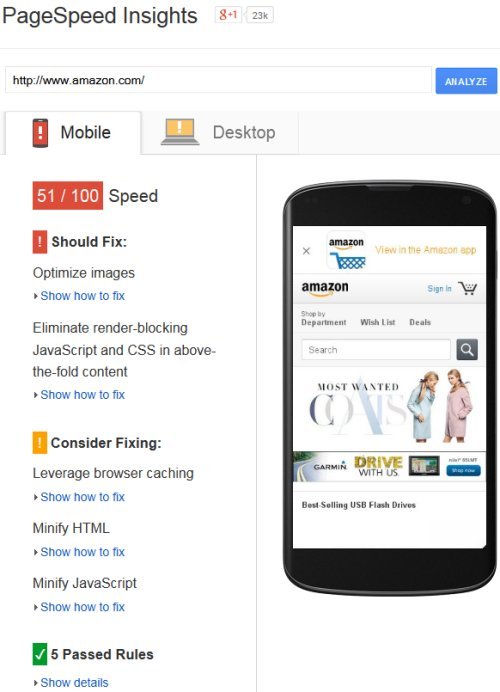
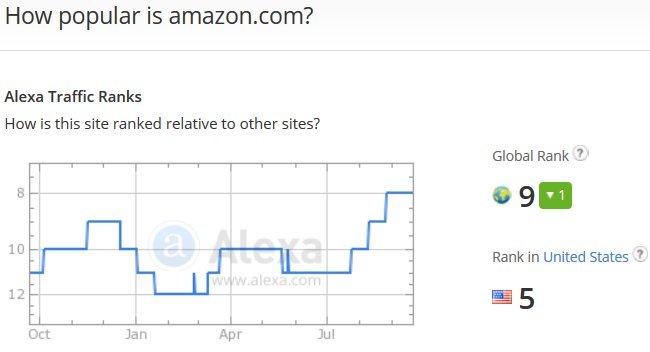
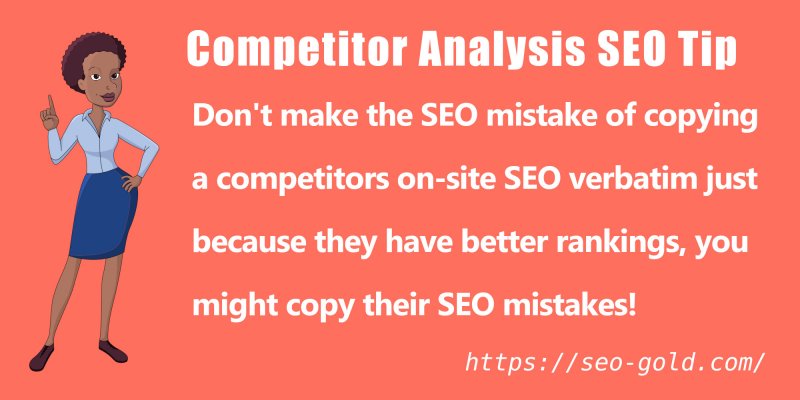
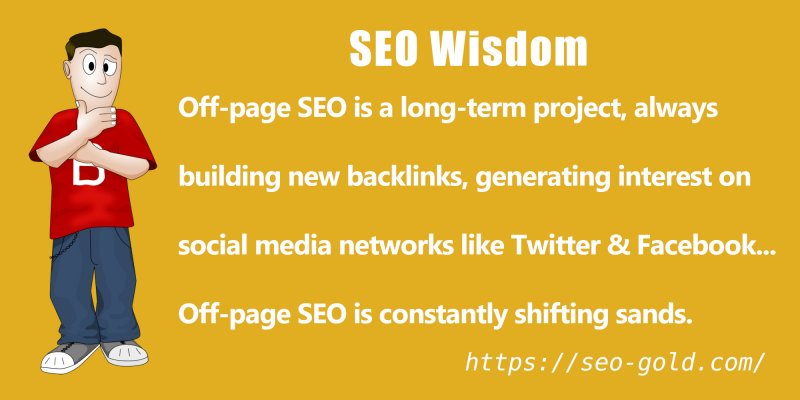
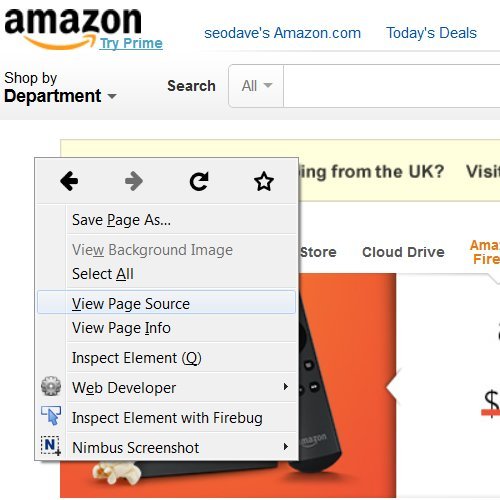
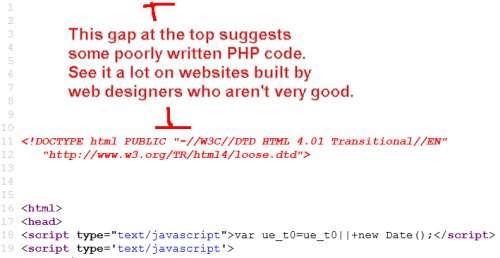
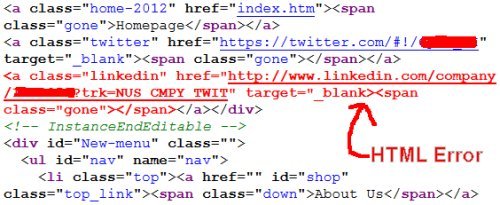
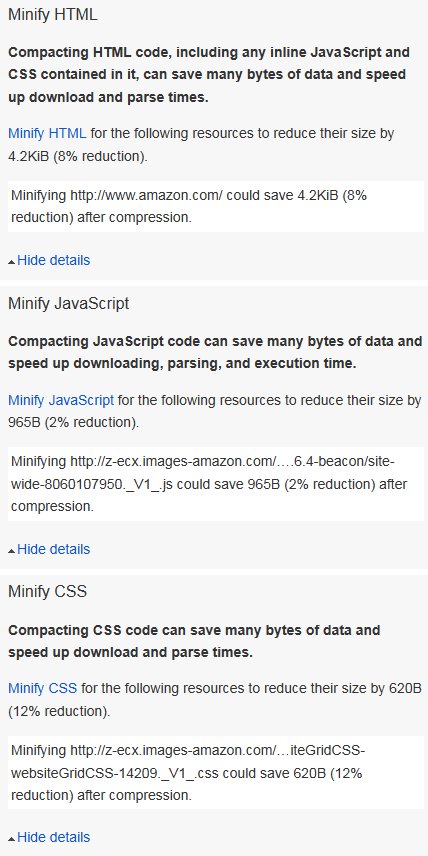
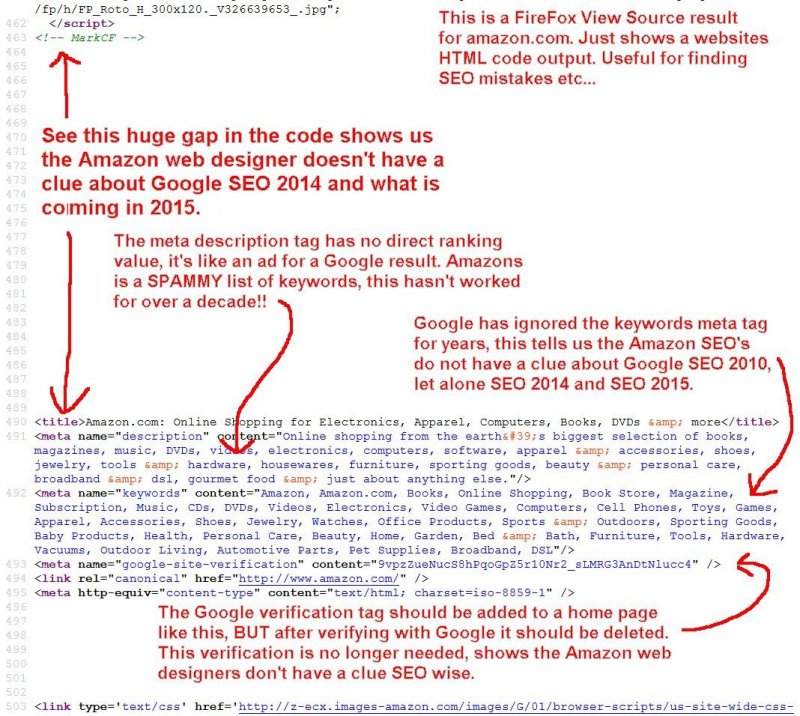
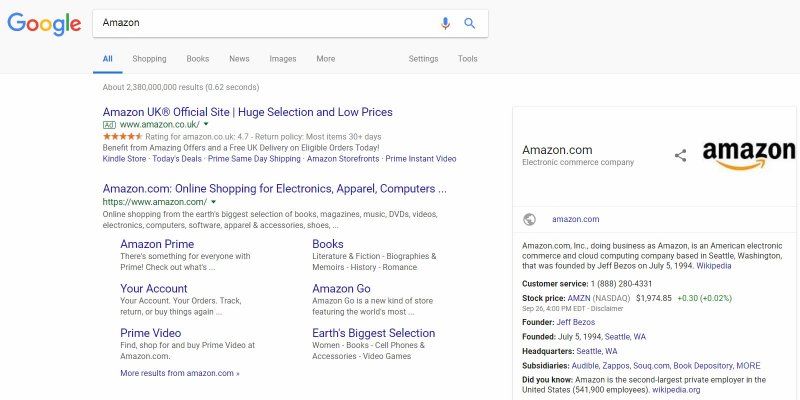
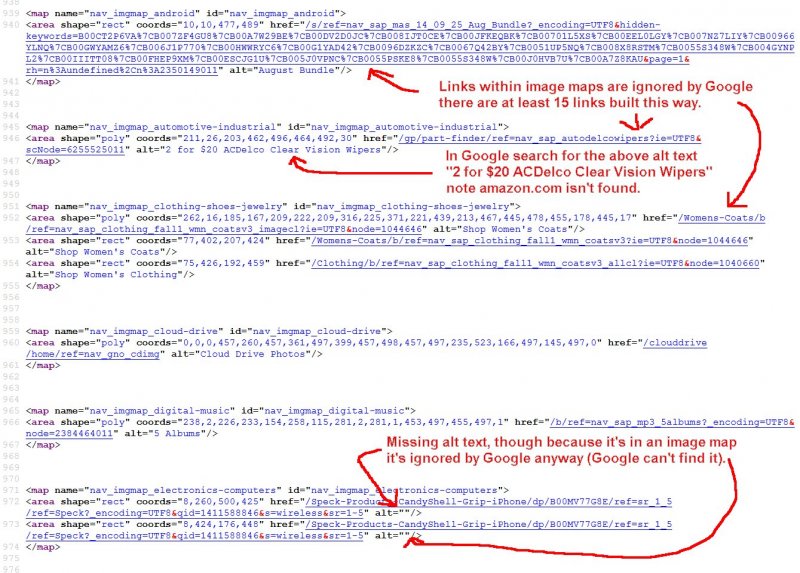
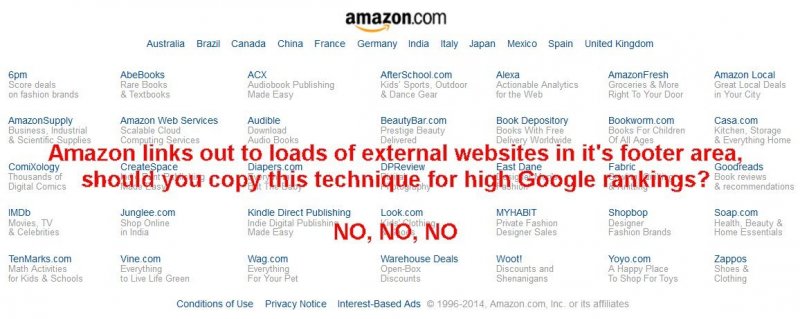


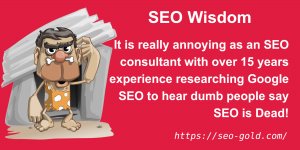
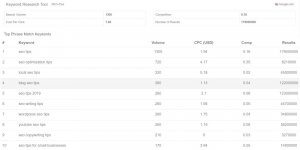
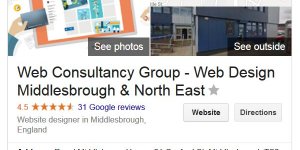

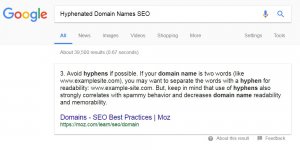
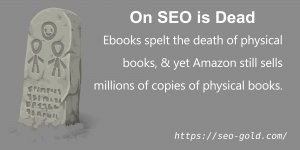
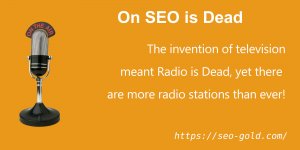
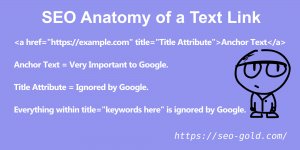
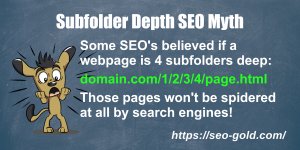


Sent Jeff Bezos who is the CEO of Amazon the following email. Obviously didn’t expect a reply from the Amazon CEO, but was interested to see what would happen (seriously expected to be pretty much ignored).
Note: Sent this early in the morning, was having problems sleeping, was something to fill 15 minutes (it’s almost 2am as I write this comment, I don’t sleep much :-(
Sent: Friday, December 05, 2014 5:53 AM
To: Bezos, Jeff
Subject: Why Does Amazon.com use Ancient SEO Techniques
Hey Jeff,
Hoping you’ll send this on to your SEO department with a ? mark.
Your website really irritates me and has irritated me for years.
Don’t get me wrong, I like Amazon, my wife and I have used Amazon for years and trust Amazon. For example a few weeks back we bought a matching set of Christmas jumpers and looks like they’ve gone missing in the post. One message to customer support and within 24hrs we know the money will be refunded, you can’t ask for better than that.
As an Amazon affiliate I’ve helped you sell over $400,000 worth of products over the years, so can’t complain at the $30K+ I made thanks to Amazon.
I like Amazon.
However, as someone who has researched search engine optimization for well over 10 years amazon.com’s SEO irritates me to the core! The SEO is so out of date it’s embarrassing for a business that is online based, is clearly building long term online market share at the expense of short term profits, you’d expect Amazon to be at the forefront of SEO techniques to grab as many Google SERPs as possible.
Ask your main SEO experts why amazon.com still uses the keywords meta tag which hasn’t had ranking value for well over a decade?
Ask them why when searching for the word Amazon in Google the result has the description:
Online retailer of books, movies, music and games along with electronics, toys, apparel, sports, tools, groceries and general home and garden items. Region 1 …
which is the DMOZ description from
http://www.dmoz.org/Shopping/General_Merchandise/Major_Retailers/(Update: DMOZ no longer exists).Why are your SEO experts allowing DMOZ to set the meta description and not blocking the DMOZ description and setting a better description your best ad writers wrote?
Want more SEO questions send them to https://seo-gold.com/seo-check/ and ask them why are they making so many basic SEO mistakes that’s going to have an impact on Google search results and cost you lost sales?
Have a good Christmas.
David Law : Happy Amazon customer, irritated SEO expert
****************************
Got a Response 3-4 days later
****************************
Hello David,
I’m Becky Saari of Amazon.com’s Executive Customer Relations team. Jeff Bezos received your email and asked me to respond on his behalf.
I appreciate your feedback regarding the optimization of Amazon.com’s search engine. Feedback like yours is valuable in helping us continue to improve our website and provide the best service possible for our customers. I’ve passed your message along to our Development team – I know they take feedback like yours very seriously, and will appreciate the educated perspective you’ve provided.
I’m also very happy to hear about the positive experiences you’ve had shopping with Amazon.com. Thank you for your continued loyalty, David. Please feel free to contact me by replying to this email if I can help further.
Regards,
Becky Saari
Executive Customer Relations
Amazon.com
****************************
Obviously read my email, so not a 100% canned response. Didn’t expect more than the above, Becky Saari didn’t have a clue what I was talking about, she thinks I was referring to the Amazon internal search engine :-) I also know they have inhouse SEO managers (quite a lot of them), so sounds like it’s been forwarded to the wrong department (assuming it was forwarded), so not exactly gone to the right people at Amazon.
I’d bet good money 3 months from now Amazon.com still uses awful on-site SEO.
Would be interesting to understand why Amazon is failing on these basic SEO points?
I wonder if it’s a case none of their SEO experts (or to be more accurate SEO managers: the fact they still use meta keywords tags means they aren’t experts) dare step up and remove the meta keywords tags?
Must be hard working for a huge billion dollar company and being willing to put your neck on the chopping board. If any Amazon SEO managers read this, go do the basic SEO research you are paid a lot of money to do and step the feck up and at least remove the meta keywords tags.
I could not imagine working in an environment where I was so scared about my job I couldn’t make such a safe change: removing the meta keywords tag won’t cause the sky to fall Chicken Licken.
I can see the conversation now:
SEO manager with half a brain: “I’m removing the meta keywords tags“.
Senior SEO manager: “Why, it will damage Amazon’s Google rankings!”.
SEO manager with half a brain: “No it won’t, Google doesn’t use the meta keywords tags, hasn’t for years”.
Senior SEO manager: “Amazon has had meta keyword since day one and all our competition does as well, I’m not going to be the one held responsible if it goes wrong, leave it as it is”.
SEO manager with half a brain: “Erm, but, erm….”
I wonder if they still submit Amazon to Google :-) I was joking, but you never know!!!
David
Not really related to SEO in anyway, but as I mentioned the Christmas jumpers we ordered from Amazon didn’t arrive above… Really irritated the Christmas jumpers didn’t arrive, wasn’t enough time to reorder so we don’t have them now :-(
My wife ordered the following from Amazon recently:
Two matching Christmas Jumpers.
Sharpie Pens.
Battery recharger (includes 4 batteries).
2 x 4 Rechargeable Batteries.
It was one Amazon order, but from multiple Amazon sellers so was sent over multiple Amazon packages (I think 4 packages).
These two items arrived no problems:
Sharpie Pens.
Battery recharger (includes 4 batteries).
Two matching Christmas Jumpers: didn’t arrive and as it wasn’t Amazon shipped items Amazon said they’d make a refund (not checked if it’s been refunded, assume so).
2 x 4 Rechargeable Batteries: didn’t arrive, was shipped by Amazon so they shipped again. The second try also didn’t arrive! Shipped again the third try arrived, but only one set of batteries: wife has let Amazon know, waiting on response.
Considering the resends that’s 6 packages sent and only 3 arrived.
We aren’t regular Amazon shoppers in the sense of every month (couple of times a year probably), but we do order online regularly and most things we order arrive (struggling to think of a non Amazon items that went missing). Last Christmas my wife ordered some clothes from Amazon, they also didn’t arrive (got a refund).
I think the Christmas jumpers etc… is the first Amazon order since the clothes went missing the year before, so out of 7 packages sent from Amazon only 3 arrived, that’s ridiculous clearly someone is stealing Amazon packages locally (not from our door, the batteries would fit through the letterbox).
Since Amazon give refunds/replacements and Amazon doesn’t have tracking on these items (we aren’t having to sign for delivery) this must be costing Amazon a small fortune.
This latest order of missing items comes to about �80.
David